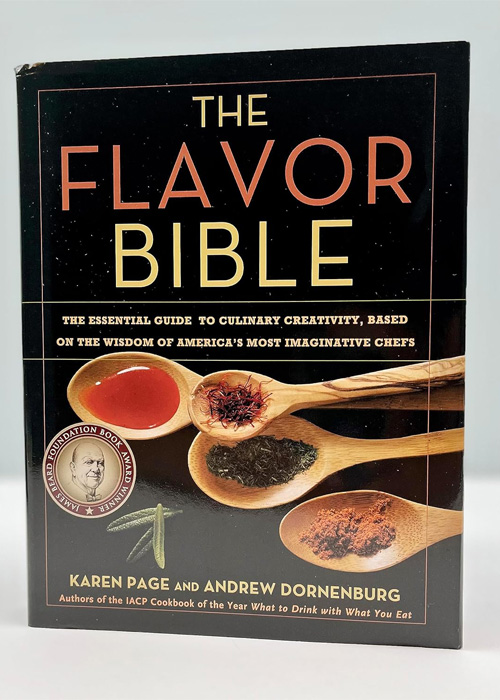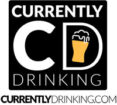[ad_1]
At a latest symposium on sustainability, the moderator queried a panel of bartenders about their favourite bartending books. I’ve heard the query posed many instances by the years, however one bartender’s unequivocal response that day jogged my memory how typically the reply is similar. Shockingly, the guide isn’t about cocktails or bartending methods in any respect.
Initially revealed in 2008, Karen Web page and Andrew Dornenburg’s guide “The Taste Bible: The Important Information To Culinary Creativity, Primarily based on the Knowledge of America’s Most Imaginative Cooks” has quietly reached cult standing throughout the bar business. The 392-page tome, which hit cabinets in the course of the embryonic levels of the cocktail revolution, was initially designed to encourage cooks and residential cooks to develop higher instincts by deepening their understanding of taste mixtures.
“Bar books are extra about telling you how you can be a bartender, the craft and ethic of bartending,” says Leila Miller, the bartender on the symposium who cited the guide as her favourite. “However with ‘The Taste Bible,’ you’re continuously utilizing it for various issues.”
Do not Miss A Drop
Get the newest in beer, wine, and cocktail tradition despatched straight to your inbox.
By means of the years, craft bartenders like Miller have embraced the best way the guide trains them to strategy cocktail design with a chef’s mindset. Within the absence of a definitive useful resource for how you can harness the ability of taste in cocktails, Web page and Dornenburg’s guide has turn into canon for contemporary mixologists.
A New Paradigm for Exploring Taste
In keeping with the guide’s preface, “The Taste Bible” is “a complete, easy-to-use single-volume reference of greater than 600 alphabetical entries itemizing modern-day appropriate flavors, chronicling new taste synergies within the new millennium.” The majority of the guide is a taste matrix, itemized by particular person elements listed from A to Z. Every ingredient is accompanied by recommended taste pairings with a rating system that denotes the totally different levels of compatibility for every recommended match. It additionally weaves in commentary and anecdotes from notable cooks like José Andrés and Eric Ripert with insights on how they strategy taste and what defines nice cooking.

“The Taste Bible” is the uncommon cookbook that accommodates no recipes. As a substitute, it reads extra like a treatise on music idea that regards taste affinities like harmonious chords, encouraging readers to make use of recommended pairings, like rhubarb with ginger and spearmint or tamarind with Thai chile and mustard, as launching factors for their very own culinary creations. Early on, the authors have been stunned to search out that most of the rules espoused within the guide that have been meant to use to the kitchen may additionally apply to the bar. However over time, they started to know how the guide was serving to bartenders strategy their craft extra intuitively.
“Bartending is like cooking with out the applying of warmth,” says Dornenburg. “Issues like grating nutmeg over a cocktail, including a splash of bitters, or flaming a citrus peel are like seasoning. All of the totally different sorts of garnishes are simply methods of including extra flavors.”
As restaurant bars and kitchens grew to become extra symbiotic, bartenders gravitated to the guide for a similar causes cooks did, to discover distinctive taste mixtures by trying up elements to search out their kindred spirits. “It’s extra like a taste atlas or a taste thesaurus,” says Toby Maloney, a companion and the pinnacle mixologist at The Violet Hour in Chicago. “If I do know the place I’m beginning, I can take a look at a pair pages and see how you can get the place I’m going.”
Increasing the Bartender’s Thoughts
When the guide was first revealed in 2008, craft bartenders have been already starting to look past the lexicon of basic cocktail recipes. Up to date bartending manuals on the time have been primarily technique-based, like Dale DeGroff’s “The Craft of the Cocktail” (2002) and Gary Regan’s “The Pleasure of Mixology” (2003), and so they targeted extra on cocktail historical past and mastering the classics just like the Martini and Previous Long-established. “The Taste Bible” grew to become a seminal textual content for a brand new class of curious bartenders who wished to check the bounds of what bartending may very well be.
Even earlier than “The Taste Bible” was revealed, Web page and Dornenburg’s earlier work was already influencing the pioneering mixologists who helped jumpstart the cocktail revolution. As a younger bartender, Audrey Saunders found their 1996 guide “Culinary Artistry,” which codified most of the ideas she’d discovered learning French cooking method in culinary faculty. “In these days there weren’t any cocktail books that had a culinary focus, and I typically discovered myself drawn to the cookbook sections of bookstores,” says Saunders, who co-owned the long-lasting New York Metropolis bar Pegu Membership earlier than it closed in the course of the pandemic. “I purchased ‘Culinary Artistry’ nearly instantly after it got here out.”
“I wasn’t fascinated with taste the identical method that each one these bartenders have been fascinated with taste. I wasn’t creating any cocktails that have been attention-grabbing, so I made a decision I wanted to know how you can prepare dinner.”
Saunders was keen to use Web page and Dornenburg’s rules in a method that allowed bartenders to embrace the culinary ethos historically reserved for cooks. “Due to the inspiration and insights that it supplied me, I started to carefully comply with Karen and Andrew’s work and picked up all of their subsequent books,” Saunders says. She stresses that Web page and Dornenburg’s anthology, which contains 11 books together with different titles like “What to Drink with What You Eat” and “Kitchen Creativity,” ought to be thought to be a sequence, not only one particular person quantity.
The Violent Hour’s Maloney remembers counting on the guide repeatedly to beat the drinks equal of author’s block when his iconic Chicago bar was nonetheless in its infancy. “I’m certain I checked out it for each cocktail menu I did at The Violet Hour in these early years, after I was touring rather a lot and needed to create menus in my head with out having the ability to do style exams,” he says.
Troy Sidle joined Maloney at The Violet Hour in 2009 and credit “The Taste Bible” for signaling a shift in his attitudes towards mixology. “I wasn’t fascinated with taste the identical method that each one these bartenders have been fascinated with taste,” Sidle says. “I wasn’t creating any cocktails that have been attention-grabbing, so I made a decision I wanted to know how you can prepare dinner.” After Maloney shared “The Taste Bible” with Sidle, it grew to become considered one of his most trusted assets for cocktail recipe growth. “I nonetheless use the guide to today after I’m caught and wish that one sudden twist in a cocktail,” Maloney says.
The Legend Lives On
The gospel of “The Taste Bible” contained in the bar business continues to unfold primarily by phrase of mouth. “My mentor and pal Will Patton gave me his copy,” says Sara Chauduri, the lead bartender of Bresca in Washington, D.C., and a finalist in VinePair’s Subsequent Wave Awards. “It’s very properly worn, the backbone is about to fall off, and there are pages folded with little Submit-it notes all through.” Chauduri credit the guide for uplifting a few of her favourite taste mixtures, like a highball she just lately developed with Japanese whisky, Harmony grapes, and recent ginger. Although she references the guide much less steadily as a part of her every day bartending apply, it nonetheless holds a particular place in her private library. “Having had it handed down as an inheritance makes it much more precious to me,” she says.
“I believe maybe the rationale “The Taste Bible” has remained related for therefore lengthy is as a result of it gives a uncommon instrument that encourages a bartender’s personal creativity,” says creator Web page, “quite than merely offering particular recipes which are recognized to work by duplication, which helps to make their work extra satisfying, recent, and significant.” Web page and Dornenburg proceed to marvel on the guide’s longevity, estimating that it’s bought properly over half 1,000,000 copies over its lifetime.
“Bartenders are so executed with the loopy subject of random-ass bar books,” says Miller, who runs the beverage applications at Vicia and Taqueria Morita in St. Louis. “They get redundant to a degree.” A worn copy of ‘The Taste Bible’ sits on a shelf adjoining to the bar at Vicia nestled alongside copies of foundational texts like Dave Arnold’s “Liquid Intelligence” and David Wondrich’s “Imbibe!”
“I really like all of those books,” Miller says. “However ‘The Taste Bible’ is the one one which makes me assume exterior the field.”
This story is part of VP Professional, our free platform and e-newsletter for drinks business professionals, masking wine, beer, liquor, and past. Join VP Professional now!
[ad_2]

